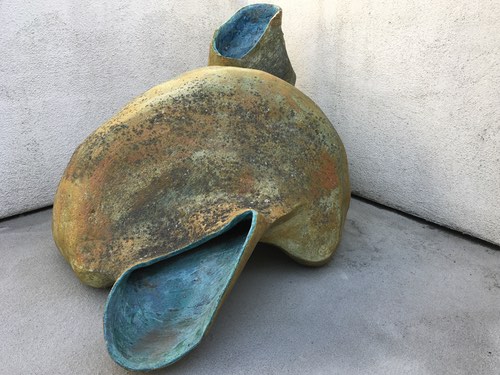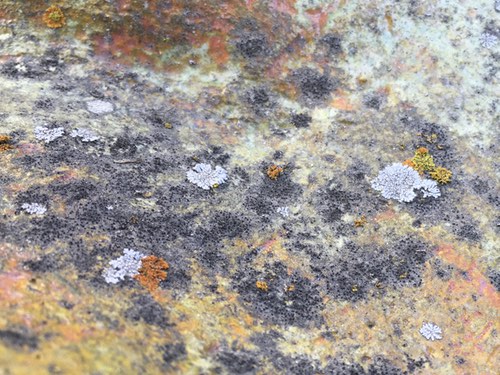Books have always been a part of my life. When we were children, my mother would take us to the library. When I was in college I would spend part of a day each week wandering through the stacks. After grad school, I started my library. I have nearly 1,500 books. There are books on art, artists, film, graphic design, gardening, horticulture, novels, children’s books, textbooks, and miscellaneous books on random topics.
I love reading, the way books feel in my hands, turning the pages, the fragrance of paper and ink. I was taught to respect books, but then something happened. I found that I really liked underlining. That grew to writing in the margins and using any white space to record ideas for possible work. Then I started folding corners and pages.
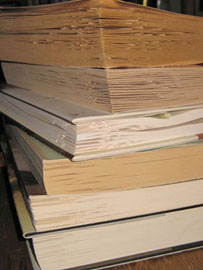
When I open one of my books to locate a quote or some notes that I have made, it is quite enjoyable to revisit the story, to read a few pages or several chapters. To remember the first time that I read the book.
I resisted reading e-books. My iPad is thin, slippery, and has a bit of glare. How would I dog-ear pages, write in the margins, underline…
I tried reading a few books on my iPad and in doing so found that I could customize the text. I could make the text large enough that I no longer needed to wear glasses. I also found that I quite like reading light text on a black background. And I could read in the dark.
Then I found how easy it was to highlight, bookmark, and make notes. I could download the lot from amazon. A few adjustments to the downloaded file and I could import the text into my database of quotes and phrases. Yep, I have a database of words, phrases, quotes.
I have thought about making books, but one thing always stopped me. What will be on the pages? The thought of an empty book, seemed incomplete. I actually attempted constructing a few books over the years.
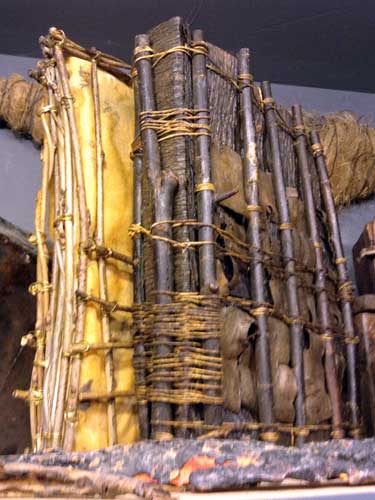
A couple of books constructed of materials collected from nature, fabric, paper, copper wire, and waxed linen cord. I saved a couple to remind myself why they did not work.
I also made a series of small books constructed of hardware cloth covers coated with Egyptian Paste. The covers were fired to cone 016. Hot enough for the clay to mature, but not hot enough to melt the hardware cloth. I cut copper and aluminum flashing for the pages. I bound the pages and covers together and fired the lot.


The pages have a lovely surface, but they are still empty.
The past several years I have used coded messages in my work. It is quite enjoyable to figure out ways to put text in my work that cannot actually be read as text but is seen as pattern. Well, the text could be read if the code is deciphered. And since I am not a cryptographer, it isn’t too difficult to figure out.
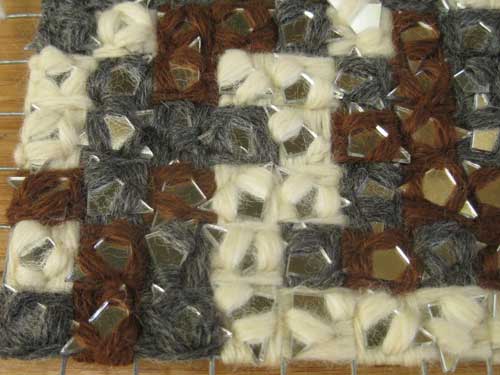
This is a detail of code in a work that I have since completed. I used Morse code with rust yarn for the dots, gray yarn for the dashes, and cream yarn for the spacers. The bottom left corner has gray, rust, gray which is dash-dot-dash or a k.
I have decided to revisit books again with the idea of including coded text. Each book will have a theme: connection, grief/loss, invisible/visible, kindness, memory, nature, perception/seeing, power, reflection, self, truth…
My plan was to make wool knitted and fulled pages, with stitched coded messages, and dried and stitched plant bits. I knitted all sorts of stitch patterns to see which stitches would work best.
Then something unexpected happened. I had a dream, an epiphany. In the dream rather than making books I was making pages and framing them as artifact. Framed fragments of pages would be more compatible with my body of work. Was my creative self giving me a message or was the dream a mash up of a bunch of things that I had been thinking about throughout the day? No matter, I like the idea.
I began to approach knitting differently. Rather than knitting rectangles for book pages, I wanted the pieces to be odd shaped.

The top portion was knitted. The piece was removed from the loom, rotated 45º, returned to the loom, and then the cable pattern was knitted.
Top Portion
Row 1 E-wrap (each peg twice)
Row 2 Purl (wrap)
Bottom Portion (Cable)
Row 1 Knit
Row 2 Purl
Row 3 Knit
Row 4 P,P, Twist Knit, P,P, Twist Knit…
This is the back of the above piece. It is important that the back is interesting because both sides of a page can be visible.

This combination of stitches is quite nice. There does seem to be some consistency in my choices. It appears that I like knot-like stitches.
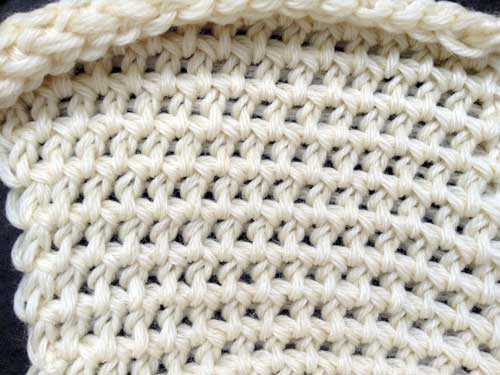
Row 1 Figure 8
Row 2 E-wrap
If after fulling, the fabric still has holes, I plan to either weave in yarn or an i-cord.
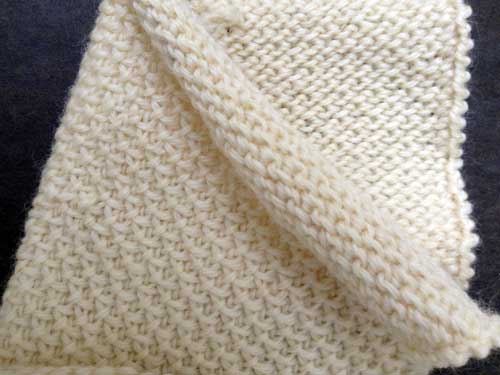
The idea was to knit a long piece, full it, and fold it in half to create a signature. Then bind several signatures together.
Row 1 K all
Row 2 K, S… K
Row 3 K all
Row 4 S, K… S
It will be fun to see how the series evolves.
